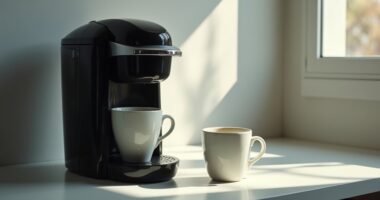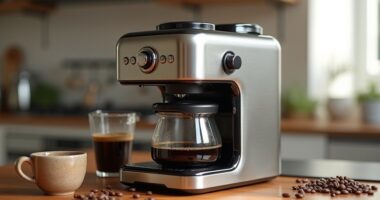Ever wondered why your favorite coffee shop feels like a luxury getaway? It’s a mix of rising ingredient costs, pricey rent in hip neighborhoods, and staffing challenges. Add that to fancy equipment prices and the craving for premium drinks, and your latte might feel like pure gold! Plus, the cafe scene is all about those high-quality beans. Stick around, and you’ll uncover the juicy details behind the price tags!
At a Glance
- Rising ingredient costs due to shortages, tariffs, and transport expenses drive up coffee prices in shops.
- Labor challenges result in higher wages and turnover costs, impacting overall pricing for consumers.
- Prime location rents can reach $10,000 monthly, significantly increasing operational costs for coffee shops.
- Quality equipment investments, essential for crafting beverages, contribute to the startup and operational expenses.
- Increased consumer demand for premium coffee experiences encourages shops to charge higher prices for unique offerings.
Rising Ingredient and Supply Costs
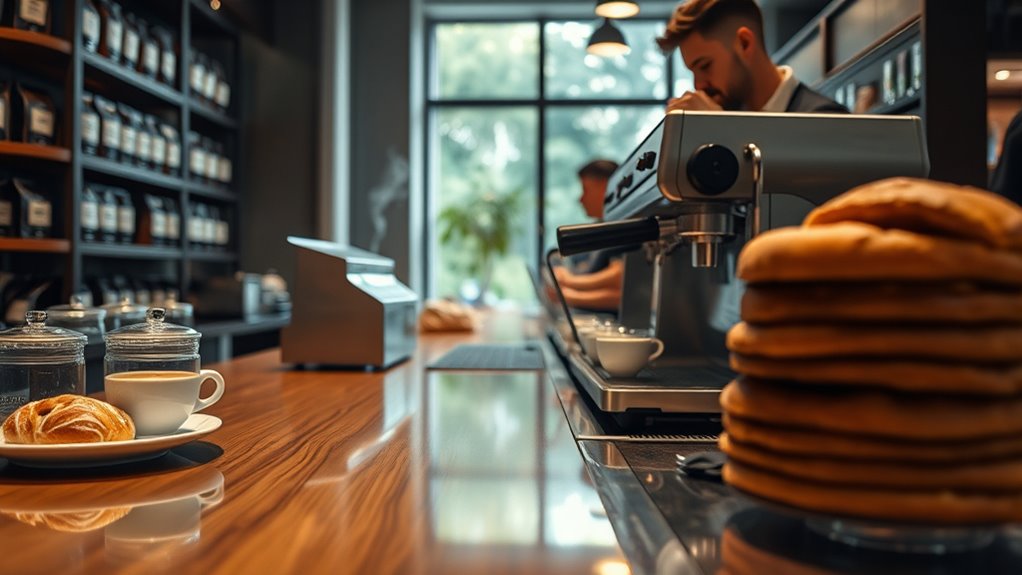
If you’ve ever wondered why your favorite coffee order seems to cost a small fortune lately, you’re not alone! Ingredient shortages and supply chain disruptions are shaking things up big time. Tariffs and wild weather have made coffee beans rarer than a unicorn! Brazil, our go-to for coffee, faces droughts, while rising transport and packaging costs add to the chaos. Your local café is juggling these price hikes, trying to keep things affordable without scaring you away. Additionally, the demand for Colombian coffee beans has surged, further straining the availability of quality beans.
Labor and Staffing Challenges
Rising ingredient prices might be hitting your wallet hard, but there’s another challenge brewing behind the scenes: labor and staffing.
It’s tough out there! Coffee shops face high staff turnover, making staff recruitment a real headache. With wages soaring, independent shops scramble to keep employees happy and motivated. You know the vibe—flexible schedules and a fun work culture are essential.
Coffee shops are struggling with high turnover and rising wages, making it essential to create flexible schedules and a vibrant work culture.
But, when you’re trying to balance quality and speed, it gets tricky. Plus, fewer employees can mean longer waits for your favorite brew. Many local shops, like those in Pittsburgh’s finest coffee spots, are also competing to attract and retain skilled baristas.
Investing in employee retention is key, helping your local café serve you better while keeping those costs in check!
Real Estate and Location-Based Premiums
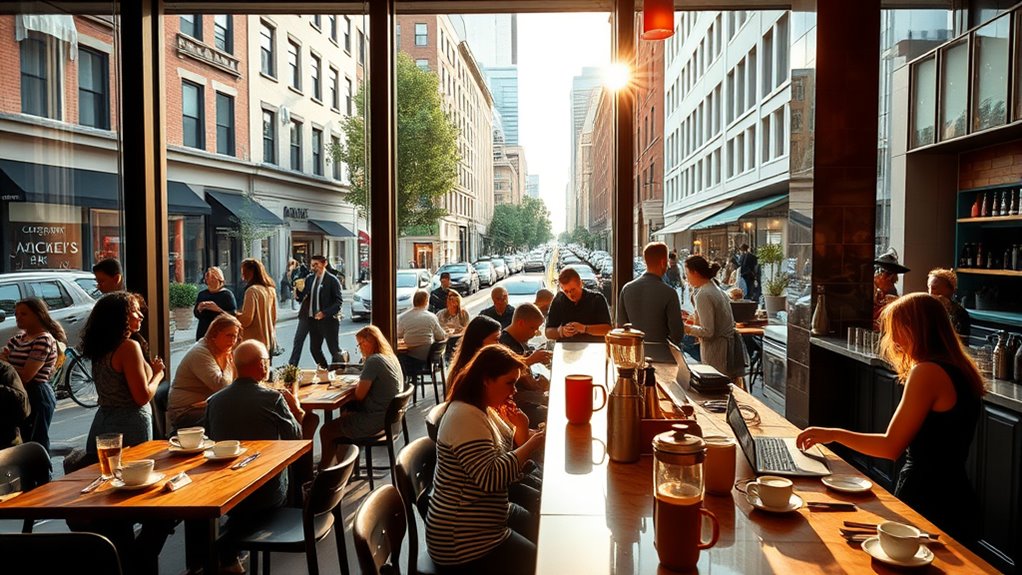
When you stroll into your favorite coffee shop, have you ever thought about what it takes to keep those doors open? Real estate trends play a huge role!
Rent can skyrocket, especially in trendy areas where location desirability skyrockets. You might pay $10,000 a month in a bustling city, while a cozy spot in a small town might only cost $2,000.
But that foot traffic? Totally worth it! More people mean more sales, which helps cover those high rent costs. Additionally, coffee shops often source Seattle’s finest coffee beans, which can also contribute to higher prices due to quality and demand.
Equipment and Startup Investment
Starting a coffee shop isn’t just about brewing that perfect cup of joe; it’s also about the gear you need to get the ball rolling!
Think about it—espresso machines can set you back anywhere from $2,000 to $40,000. Ouch! That’s where equipment financing comes in handy.
You’ll also need grinders, drip makers, and even refrigeration units for milk. All these operational investments can add up to a whopping $80,000 to $300,000!
In addition to the basics, investing in a high-quality automatic espresso machine can greatly enhance your coffee offerings.
It sounds intimidating, but investing in good equipment means fewer headaches later. So, gather your funds and get ready to brew some magic, my friend!
Operational Efficiency and Profit Margins
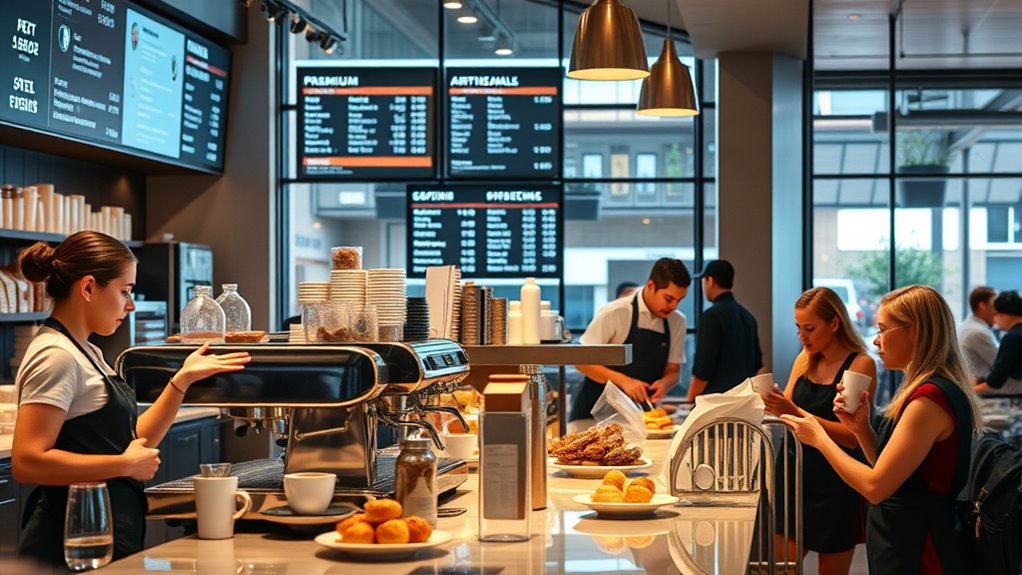
You’ve got your coffee shop equipment ready, and now it’s time to tackle the nitty-gritty of keeping your business running smoothly and profitably.
Let’s chat about cost control and inventory management! High gross margins sound great, but if rent and labor skyrocket, you’re in trouble.
Efficient scheduling keeps your staff balanced, avoiding the dreaded overstaffing and long lines. Plus, smart inventory management means no more sad, spoiled milk!
Using the right coffee storage container can help maintain freshness and reduce waste, ultimately saving you money.
Use tech to predict demand and keep tabs on your stock. Nail these areas, and you’ll brew up a thriving coffee shop that your community loves, and your wallet appreciates!
Consumer Trends and Premiumization
As coffee lovers dive deeper into their caffeine adventures, it’s clear that premium experiences are taking center stage in the coffee shop scene.
You’re not just grabbing a cup; you’re indulging in something special! Here are a few reasons why:
- Health Trends: Health-conscious drinks like superfood lattes are all the rage.
- Quality Matters: People crave high-quality beans and expertly crafted beverages.
- Community Vibes: Cafes are becoming social hubs where you can connect.
With more folks seeking these premium experiences, it’s no wonder coffee shop prices are climbing. Ground coffee is often selected for its rich flavors, enhancing the overall tasting experience.
After all, who doesn’t want to sip something extraordinary?
Impact of Inflation on Pricing
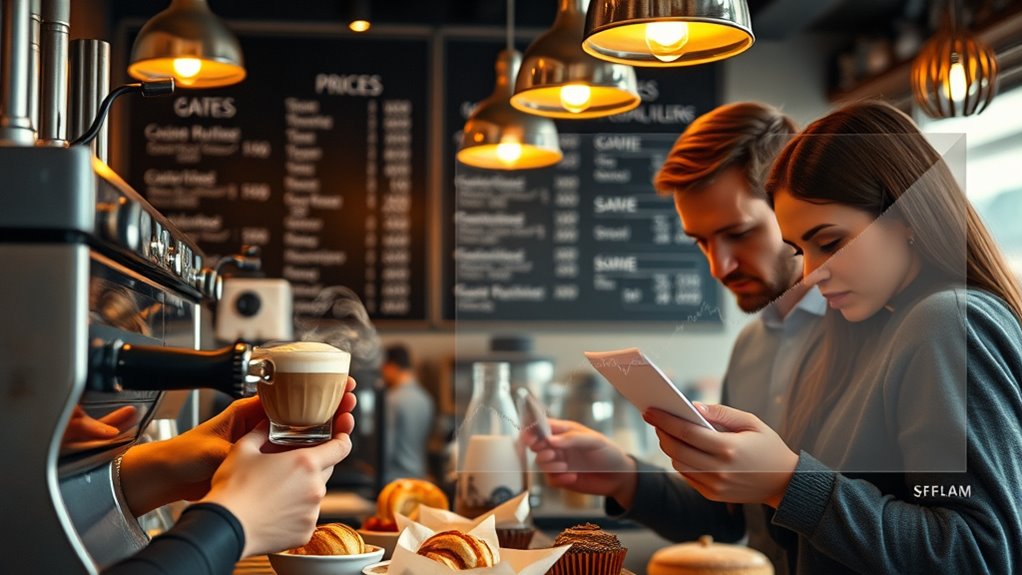
While sipping your favorite brew, you mightn’t realize just how much inflation is stirring things up in the coffee world.
With coffee prices skyrocketing, thanks to inflation trends, your morning cup’s cost is climbing too. Coffee shops face rising raw material costs and operational expenses, prompting them to rethink their pricing strategies.
Remember that 50% tariff on Brazilian coffee? Ouch! It all adds up.
Additionally, the quality of water used in coffee preparation can significantly influence the taste, making the best water a crucial factor in your coffee experience.
So, when you pay $5 for a cold brew, know it’s not just fancy beans—it’s the whole supply chain feeling the pinch.
Embrace it; we’re all in this caffeinated journey together!
The Role of Specialty Coffee Demand
Ever notice how your coffee order’s gotten a bit fancier over the years? You’re not alone! Specialty coffee consumption is booming, and it’s changing the game.
Here’s what’s driving those prices up:
- People crave premium coffee experiences.
- Coffee lovers want unique flavors and custom options.
- Younger folks are leading the charge, demanding quality.
With 46% of U.S. adults sipping specialty brews daily, it’s clear we’re willing to pay for that perfect cup. Additionally, many consumers are drawn to perfect pairings that enhance their coffee enjoyment, making the overall experience even more valuable.


